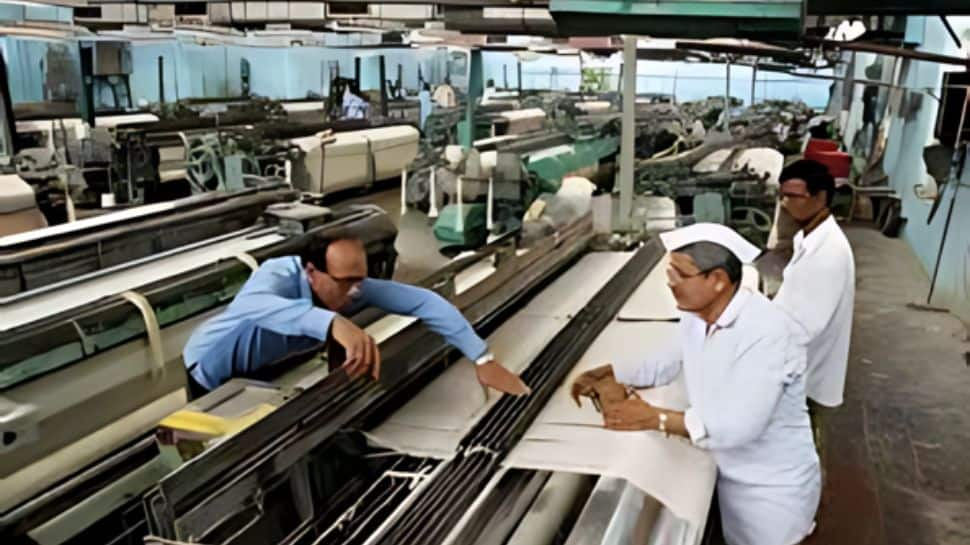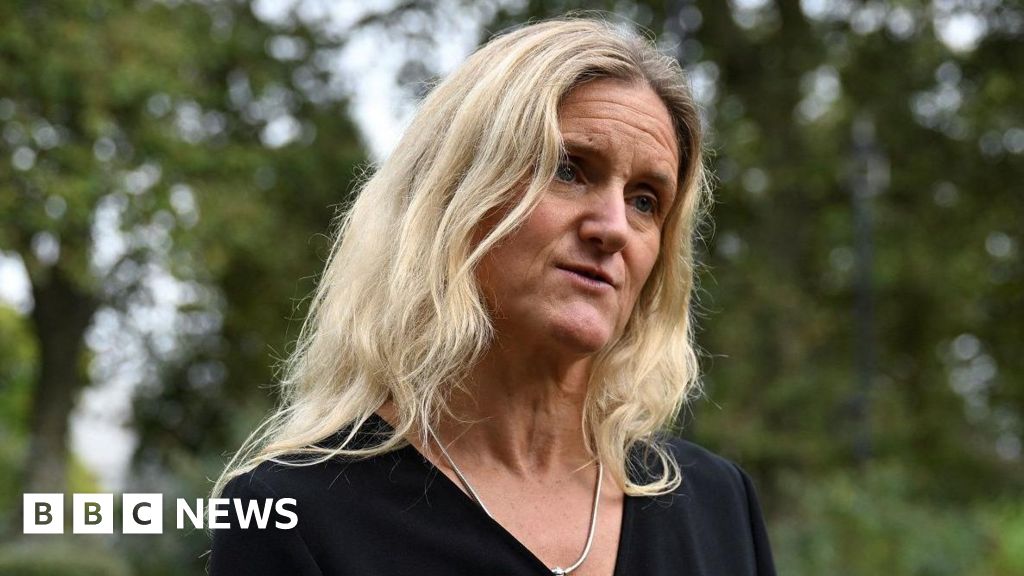The nominees for best sound — a slightly recent hybridization of the previously distinct sound editing and sound mixing categories — include some of the biggest (and loudest) films of the year: the quaking booms and blasts of “Oppenheimer” and “Mission: Impossible — Dead Reckoning Part One,” the dreamy nostalgia and sensual detail of “Maestro,” the futurist sheen and android textures of “The Creator.”
But if this year’s Academy voters are listening at all, the Oscar must go to “The Zone of Interest.” Jonathan Glazer’s first directorial outing since 2013’s “Under the Skin” is one of the most shocking and affecting films I’ve seen in decades, and it has nothing to do with what I saw.
Glazer’s vision for “Zone” was to create two parallel and simultaneous films — one you see, and one you hear. The former is, as Glazer puts it, a “family drama” — a domestic portrait of Nazi commandant Rudolf Höss (Christian Friedel), his wife Hedwig (Sandra Hüller) and their family of five growing children.
The latter film, the one hidden from view, paints a starker picture. Over the high wall of the Höss garden is the concentration camp at Auschwitz, which Rudolf is actively working to outfit with new crematoria, and which everyone in the Höss clan does their best to ignore.
As viewers, we never see the atrocities beyond the wall or within the camp’s chambers. Instead, we hear them: growled orders followed by shrieks of pain, crackles of gunfire pillowed by their own echoes, the low churn of the furnace, the cries of children, the industry of death that has everyone in the house coughing.
All of this is set against the stone-silent beauty of Hedwig’s backyard garden, an Eden blooming with phlox, dahlia and roses.
In scenes that find the Höss family in repose on the banks of the Sola, sound creates a canopy of futile escapism — the woodpeckers echoing the machine guns, the turtledoves grieving in the trees, the unceasing wails of Hedwig’s baby Annagret. The film insists upon a silence it is unable to create.
Now and then, Mica Levi’s nearly absent score of serrated synthesizers rears up and snags your ear like a loop of razor wire, with long trails of reverb left hanging in the air like plumes of black smoke. Other times, a collective roar of motorcycles suggests the Höss household isn’t alone in trying to drown out the horror.
Sound designer Johnnie Burn — who is nominated along with sound mixer Tarn Willers — led the effort to capture the unthinkable sound of the camp. On a recent Zoom call, Burn recalled initial direction from Glazer that was clearly direct, if not directly clear.
“John said to me, ‘I’m going to go and film this family drama, and in a year I’ll see you again. And by then you need to be an expert on the sound of Auschwitz.’”
To begin, Burn compiled a “bible” on the sounds of the concentration camp, consulting archives of the Auschwitz Memorial Museum, witness testimonies and historical records. But he also documented the birds and the bees, the flora and fauna, the fleets of planes clawing contrails into the sky, the military vehicles idling nearby.
But attenuating what audiences would hear and what they wouldn’t — the razor’s edge of the audible — was a process that took a year and a half. Burn names his two paramount concerns as credibility (the authenticity of sound) and redaction (the necessity of restraint).
How, for instance, to distribute the sound of Auschwitz’s 80 daily executions by gunshot without sensationalizing their unrelenting fire? How to achieve an analog of psychological remove through the precise capture of acoustic distance? Even the question of how to distribute sound within the cinema came into play. (To this end, Burn opted to have the screen of the theater mimic the walls of the camp, with the sounds seemingly coming over its edge.)
Visually, “Zone” exercises discretion that borders on offensive, as details of the carnage within remain surgically withheld and guarded from view: The tail of white smoke from an incoming locomotive growing along the top of the garden wall; the ghostly cloud of cremains staining the river gray against the green grass; the halls of the house bathed each night in hellish red light belched from flaming chimney towers.
But Burn’s palette of sounds holds the focus — sometimes desperate to be detected, more often impossible to ignore.
This isn’t Glazer’s first-time collaboration with Burn. The two started working together in the late ’90s when the director was still filming Guinness commercials and music videos (such as Unkle’s “Rabbit in Your Headlights”). Burn worked on Glazer’s 2004 mystery “Birth” — though not without getting fired by New Line Cinema after producer Barbara Broccoli complained he’d mixed the film like a TV spot. (An encouraging Glazer ended up rehiring him to finish.)
And this isn’t their first time using conspicuous quiet as cinematic space. Glazer’s 2013 sci-fi noir “Under the Skin” was nearly free of traditional dialogue, employing sound and silence as complementary substances, teasing a line between language and gibberish, and suggesting that humanity exists somewhere between (or beyond) the two.
The vérité approach dispatched in “Under the Skin” was put to new use in “Zone,” with Glazer insisting that the voices of those within the walls of the camp did not come from a library of sound effects or the performance of actors — which would have seemed both wooden and callous.
“We were finding the right thing to do was to go and hang out in foreign countries, where people shout in German,” Burn says, “or where people shout in pain in French, and then reappropriate it.”
This meant taking Eurostar trains and microphones to Paris at the height of the 2023 pension reform riots to sample the ambient rage of men in the streets, or setting up near fourth-division football matches in rural Germany to capture naturalistically barked orders.
The effect is uncanny — stripped of their context, the voices limn an atmosphere of pure crisis, a sickly light on an unseen horizon. But they also string a subliminal thread from the past to the present. It’s as though a passage were opened up between one era and another, a whoosh of frigid air rushing between two realities. (In a private moment toward the end of the film, Höss himself seems to viscerally register this rip in time.)
Through sound and sound alone, Glazer and Burn offer us a harrowing new perspective on the Holocaust — and not just what happened, but how it was allowed to happen. It’s a film that tests the fragility of our care, the precarity of our comfort and our willingness to watch in silence. It offers no way to remain a passive audience, no way to listen from a distance.















































